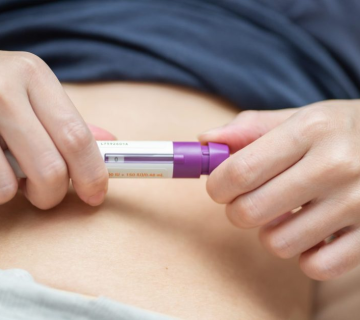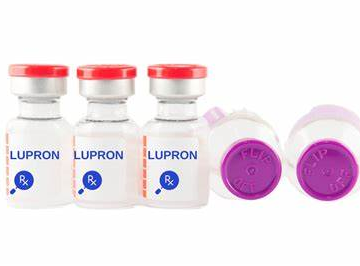
How Do I Know If My Fallopian Tubes Are Damaged?
If you’ve landed here, you might be wondering about your reproductive health—specifically, whether your fallopian tubes are working as they should. Maybe you’re trying to get pregnant and hitting roadblocks, or perhaps you’ve had some nagging symptoms you can’t quite explain. Whatever brought you here, you’re not alone. Millions of women ask this same question every year, and the good news is there are answers—and options.
Fallopian tubes are tiny but mighty players in the journey to pregnancy. When they’re damaged or blocked, it can feel like a big, confusing hurdle. But don’t worry—this guide is here to break it all down for you. We’ll cover everything from what these tubes do, to the sneaky signs of trouble, all the way to what you can do about it. Plus, we’ll dig into some lesser-known details and practical tips that other articles might skip over, so you leave feeling informed and empowered.
Let’s dive in!
Understanding Fallopian Tubes
Before we get into the nitty-gritty of damage, let’s start with the basics: what are fallopian tubes, and why do they matter?
What Are Fallopian Tubes?
Picture your fallopian tubes as two super-thin tunnels—each about as long as your pinky finger (4-5 inches)—that connect your ovaries to your uterus. They’re like the VIP pathways in your reproductive system. Here’s a quick rundown of their parts:
-
- Fimbriae: These are little finger-like ends near each ovary. They act like gentle hands, grabbing the egg when it pops out during ovulation.
-
- Ampulla: The wide, curvy middle section—it’s where the magic of fertilization usually happens.
-
- Isthmus: The narrower end that links up to your uterus, guiding a fertilized egg to its final stop.
If these tubes get blocked or scarred, it’s like putting up a “road closed” sign on this egg-sperm highway. That’s why keeping them healthy is so key.
Why Are They So Important?
Fallopian tubes are the unsung heroes of getting pregnant naturally. Here’s what they do every month:
-
- Pick up the egg: When your ovary releases an egg, the fimbriae swoop in to catch it.
-
- Set the stage for fertilization: Sperm swim up from the uterus into the tubes to meet the egg—usually in the ampulla.
-
- Move the embryo along: If fertilization happens, the tiny embryo travels down the tube to the uterus to settle in and grow.
If anything messes with this process—like damage or a blockage—it can stop the egg and sperm from meeting or trap the embryo in the tube. That’s why figuring out if your fallopian tubes are damaged is such a big deal if you’re thinking about pregnancy.
What Causes Fallopian Tube Damage?
Damage to your fallopian tubes doesn’t just happen out of the blue. It’s usually tied to something specific—sometimes a condition you didn’t even know was a problem. Let’s break it down into the usual suspects and some surprising culprits.
Common Causes
-
- Pelvic Inflammatory Disease (PID): This is the top troublemaker. PID often starts with an infection—like chlamydia or gonorrhea—that spreads from your vagina or cervix to your tubes. If it’s not caught early, it can leave behind scars that block the tubes. Studies show PID is behind up to 30% of tubal infertility cases in the U.S.
-
- Endometriosis: Imagine bits of your uterine lining growing where they shouldn’t—like on your fallopian tubes. This can create sticky patches (adhesions) that twist or block the tubes. About 1 in 10 women have endometriosis, and it’s a big factor in fertility struggles.
-
- Past Surgeries: Any surgery in your belly—like removing an ectopic pregnancy, fibroids, or even a C-section—can leave scar tissue. That scar tissue might wrap around your tubes and clog them up.
-
- Ectopic Pregnancy: This is when a fertilized egg gets stuck and grows in the tube instead of the uterus. It can damage the tube—or even rupture it—if surgery is needed to fix it.
-
- Tubal Ligation: If you’ve had your tubes “tied” for birth control, they’re intentionally blocked. Some women try to reverse this, but the tubes might still be damaged afterward.
Less Common Causes (But Still Worth Knowing)
-
- Tuberculosis (TB): Super rare in places like the U.S., but TB can infect your reproductive system in some parts of the world, scarring your tubes. It’s sneaky because it doesn’t always show obvious symptoms.
-
- Ruptured Appendix: If your appendix bursts, the infection can spread to your pelvic area and mess with your tubes. It’s not common, but it happens.
-
- Congenital Issues: Some women are born with tubes that are oddly shaped or blocked. It’s not your fault—it’s just how things formed.
-
- Cancer Treatments: Radiation or chemo near your pelvis can harm the tubes as a side effect. If you’ve been through this, it’s something to chat about with your doctor.
Quick Tip
✔️ Know Your History: If you’ve had infections, surgeries, or conditions like endometriosis, jot them down. Sharing this with your doctor can help pinpoint if your tubes are at risk.
Signs Your Fallopian Tubes Might Be Damaged
Here’s the tricky part: damaged fallopian tubes can be super quiet. You might not notice anything until you’re trying to get pregnant and it’s not happening. But there are some clues to watch for.
Common Symptoms
-
- Trouble Getting Pregnant: If you’ve been trying for a year (or 6 months if you’re over 35) with no luck, blocked tubes could be why. It’s one of the top reasons for infertility—about 25-35% of cases, according to the American Society for Reproductive Medicine (ASRM).
-
- Pelvic Pain: A dull ache or sharp pain in your lower belly—especially on one side—might mean a blocked tube or fluid buildup (called hydrosalpinx). It’s not always constant, but it might pop up during your period or randomly.
-
- Pain During Sex: If intercourse feels uncomfortable or painful (doctors call this dyspareunia), it could hint at tubal issues, though other conditions might be the cause too.
-
- Weird Discharge: Unusual vaginal discharge—especially with pain—might signal an infection that’s moved to your tubes.
-
- Irregular Periods: This isn’t directly from tube damage, but conditions like PID or endometriosis that hurt your tubes can also throw your cycle off.
When Should You Worry?
Most women don’t feel a thing with damaged tubes, which is why it’s often a surprise diagnosis. But here’s when to call your doctor:
✔️ Pain that won’t quit—especially in your lower belly
✔️ A history of infections or surgeries down there
✔️ Trouble getting pregnant after months of trying
✔️ Severe period pain or pain during sex that’s new or worse
Real-Life Example
Take Sarah, a 29-year-old who had chlamydia in college but didn’t treat it right away. Years later, she couldn’t get pregnant and felt random pelvic twinges. An HSG test showed her tubes were scarred from silent PID. Stories like hers show why early action matters.
How Doctors Check for Fallopian Tube Damage
If you’re worried about your tubes, your doctor has ways to figure out what’s going on. These tests can show if your tubes are open, blocked, or damaged—and where the problem is.
Top Diagnostic Tests
-
- Hysterosalpingogram (HSG): Think of this as an X-ray with a twist. A dye gets injected into your uterus, and if it flows through your tubes and spills out, they’re clear. If it stops, there’s a block. It’s quick—about 15 minutes—but you might feel cramps.
-
- Laparoscopy: This is a small surgery where a camera goes into your belly through a tiny cut. Your doctor can see your tubes up close and even fix minor issues on the spot. You’ll be asleep for it and need a few days to recover.
-
- Sonohysterogram or HyCoSy: These use ultrasound instead of X-rays. Saline or bubbly fluid goes into your uterus, and the doctor watches how it moves. It’s less invasive than HSG and done in the office.
What’s It Like?
Here’s a little table to compare:
| Test | How It Works | Pain Level | Time | Recovery |
|---|---|---|---|---|
| HSG | Dye + X-ray | Mild cramps | 15-30 min | Same day |
| Laparoscopy | Camera surgery | Asleep, sore after | 1-2 hours | Few days |
| Sonohysterogram | Saline + ultrasound | Mild discomfort | 20-30 min | Same day |
Practical Advice
✔️ Prep for HSG: Take ibuprofen an hour before—it can ease the cramping.
✔️ Ask Questions: Before laparoscopy, ask about risks (they’re low, but good to know).
✔️ Timing: Schedule tests right after your period ends—your uterus is less sensitive then.
Recent research (like a 2022 study in Fertility and Sterility) shows HSG might slightly boost pregnancy odds post-test by flushing out minor blockages. Cool, right?
Can You Fix Damaged Fallopian Tubes?
If your tubes are damaged, you’re probably wondering: “What now?” The answer depends on how bad the damage is and what you want—like getting pregnant or just feeling better.
Surgical Fixes
-
- Tubal Repair: For small blockages or scars, a surgeon might clear the path. Success rates hover around 20-40%, depending on the damage.
-
- Salpingectomy: If a tube’s too far gone (like with hydrosalpinx), removing it can help if you’re doing IVF later.
-
- Reversal: Had a tubal ligation? Reconnecting the tubes is possible, but it works better if less damage was done during the original procedure.
Non-Surgical Options
-
- Antibiotics: If an infection’s the culprit, antibiotics can stop it from getting worse—but they won’t undo scars.
-
- Fertility Boosters: Drugs like Clomid can up your egg output, helpful if one tube’s still open.
Fertility Treatments
-
- IVF (In Vitro Fertilization): The gold standard for bad tubes. Eggs get fertilized in a lab and placed in your uterus—no tubes needed. Success rates can hit 40-50% per cycle for women under 35, per the CDC.
-
- IUI (Intrauterine Insemination): If one tube’s good, sperm can be injected into your uterus to meet the egg.
What’s Best for You?
✔️ Mild Damage: Surgery might work if you want natural pregnancy.
✔️ Severe Damage: IVF’s your best bet—studies show it’s more effective than surgery for major blockages.
✔️ Talk It Out: Your age, health, and goals matter—chat with a fertility doc to pick the right path.
How Does This Affect Getting Pregnant?
Damaged tubes are a big deal for fertility—here’s why and what you can do.
How Damage Messes Things Up
-
- Total Blockage: Both tubes closed? Sperm and egg can’t meet naturally.
-
- Partial Blockage: Risky—eggs might get stuck, leading to ectopic pregnancy (2% of pregnancies, says the ASRM).
-
- One Tube Out: If the other’s fine, you’ve still got a shot—your body can adapt.
Your Options
-
- IVF: Skips the tubes entirely—best for severe cases.
-
- Surgery: Might fix mild damage for natural conception.
-
- Wait and See: One good tube? You might conceive without help—it just takes patience.
A 2023 study in Human Reproduction found women with one open tube had a 20% natural pregnancy rate over two years—hopeful news!
Coping with the Emotional Side
Finding out your tubes are damaged can hit hard—especially if you’re dreaming of a baby. Here’s how to handle it.
The Feelings
-
- Worry: “Will I ever get pregnant?” It’s normal to stress.
-
- Sadness: Grieving the “easy” path to parenthood is real—and okay.
How to Deal
✔️ Talk: A friend, partner, or therapist can lighten the load.
✔️ Join Up: Groups like RESOLVE connect you with others who get it.
✔️ Self-Care: Yoga, walks, or journaling can calm your mind.
Fun fact: A 2021 study showed women in support groups felt 30% less stressed about infertility. Community matters!
Can You Prevent Fallopian Tube Damage?
Not everything’s in your control, but you can lower your odds of trouble.
Prevention Tips
-
- Safe Sex: Condoms cut STI risk—PID’s biggest trigger.
-
- Checkups: Catch infections early—don’t ignore weird symptoms.
-
- Manage Conditions: Got endometriosis? Stay on top of treatment.
Healthy Habits
✔️ Eat Smart: Veggies and lean proteins support your reproductive system.
✔️ Move It: Exercise keeps blood flowing—good for all your organs.
✔️ No Smoking: It’s linked to worse tube health, per a 2022 BMJ study.
Wrapping It Up
Damaged fallopian tubes might sound scary, but you’ve got options—and hope. From spotting the signs to exploring treatments, you’re now armed with the info to take charge. Whether it’s a quick doctor’s visit or a deeper dive into IVF, the next step is yours to take. You’re not in this alone—experts, communities, and resources are ready to help.
Got questions? Your doctor’s the best place to start. Your body, your journey—let’s keep it moving forward.
Interactive Quiz: Should You Check Your Tubes?
Answer these to see if it’s time to talk to a doctor (count your “yes” answers):
-
- Been trying to get pregnant for a year (or 6 months if over 35)?
-
- Yes [ ] No
-
- Been trying to get pregnant for a year (or 6 months if over 35)?
-
- Feel pelvic pain that won’t go away?
-
- Yes [ ] No
-
- Feel pelvic pain that won’t go away?
-
- Had an STI or pelvic infection before?
-
- Yes [ ] No
-
- Had an STI or pelvic infection before?
-
- Ever had surgery in your belly or pelvis?
-
- Yes [ ] No
-
- Ever had surgery in your belly or pelvis?
-
- Notice pain during sex or super heavy periods?
-
- Yes [ ] No
-
- Notice pain during sex or super heavy periods?
Results:
-
- 0-1 Yes: Probably fine, but keep an eye out.
-
- 2-3 Yes: Worth a chat with your doc.
-
- 4-5 Yes: Time to book that appointment—don’t wait!
This isn’t a diagnosis—just a nudge to get curious about your health. What’s your score? Let us know in the comments!




No comment